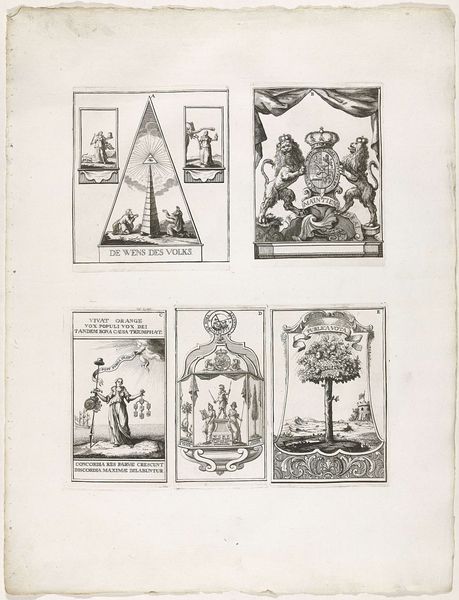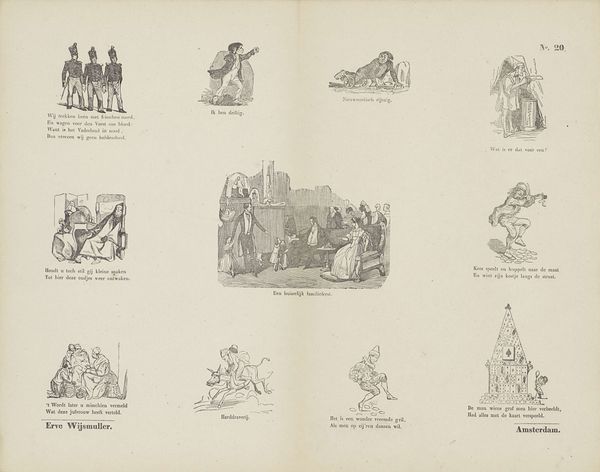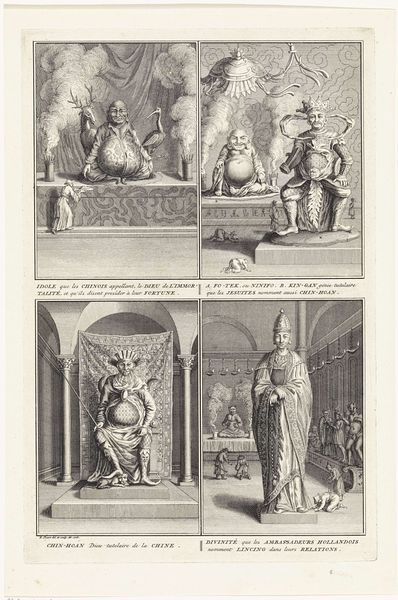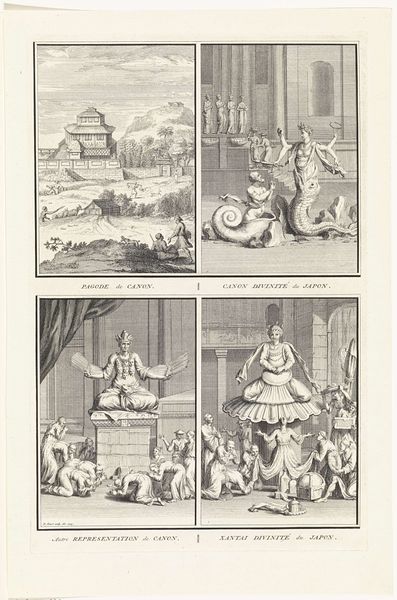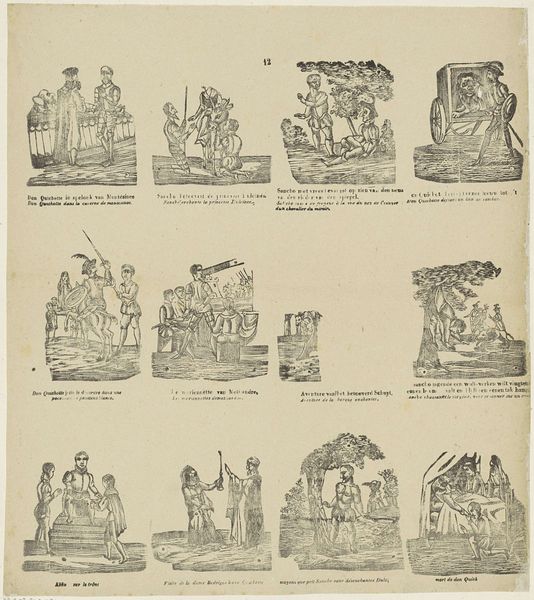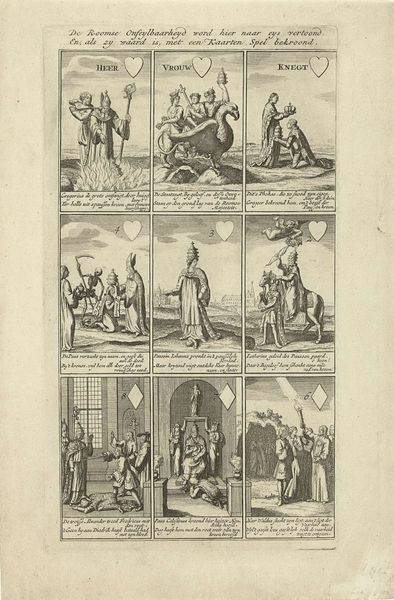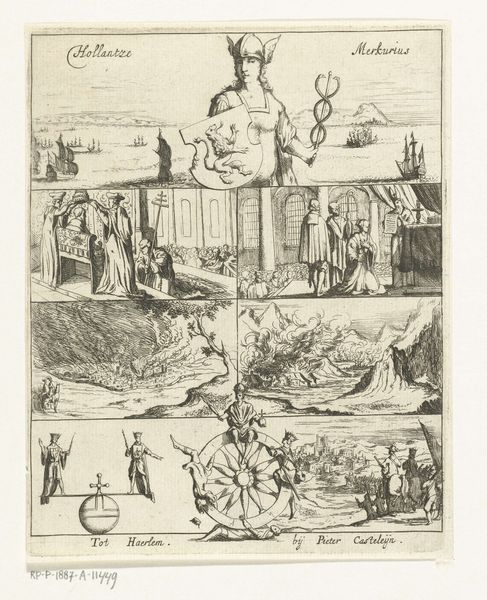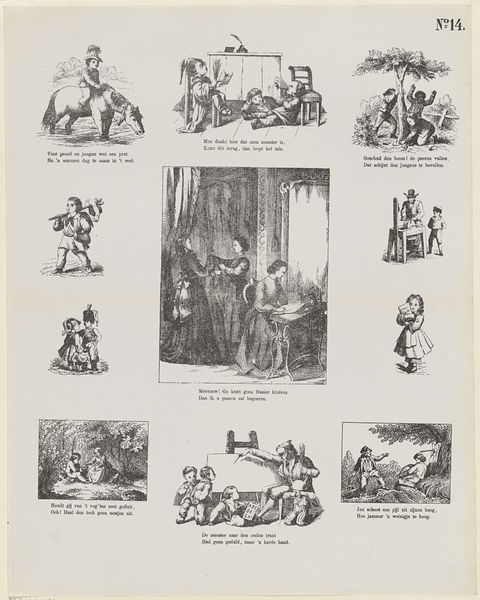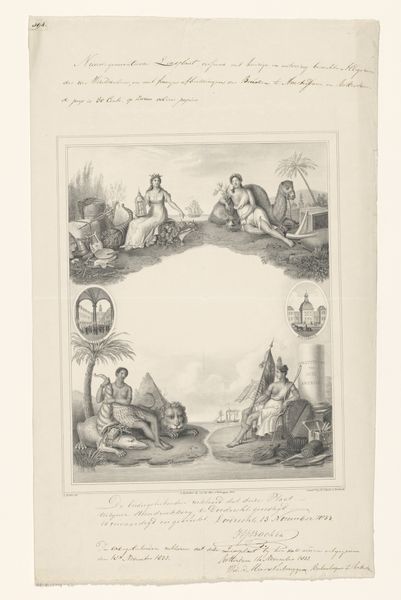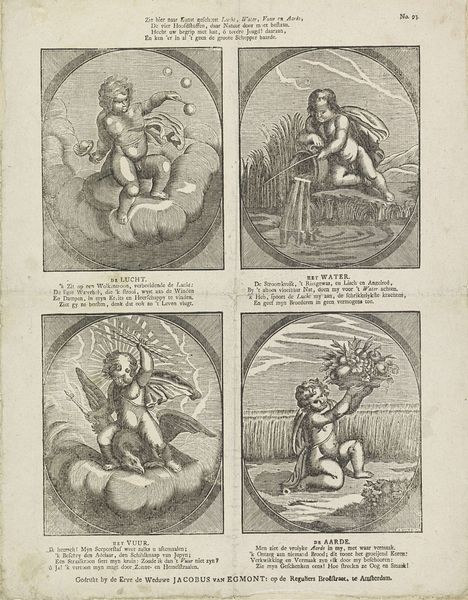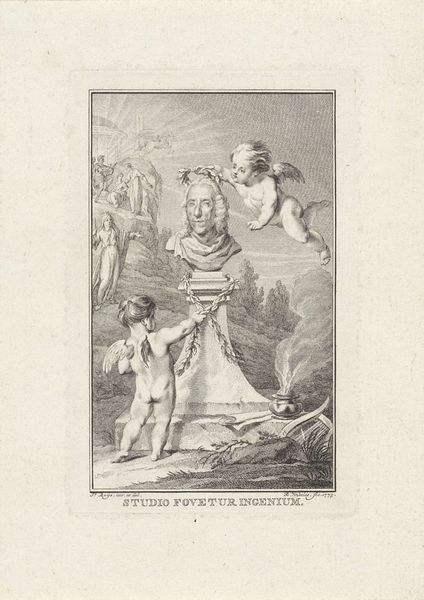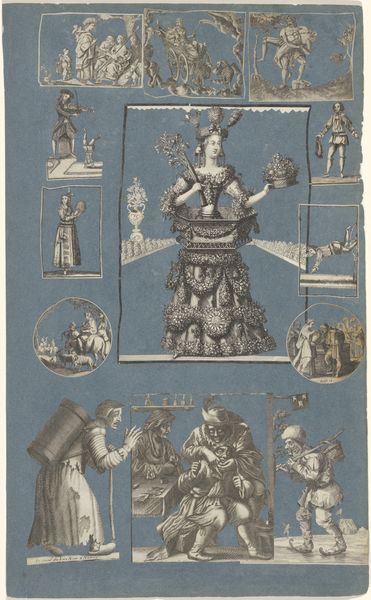
print, engraving
#
baroque
# print
#
asian-art
#
figuration
#
line
#
history-painting
#
engraving
Dimensions: height 340 mm, width 227 mm
Copyright: Rijks Museum: Open Domain
Curator: This engraving, created in 1728 by Bernard Picart, is titled "Goden en gebruiken in China en Japan" and currently resides in the Rijksmuseum. My immediate sense is one of cultural curiosity tinged with a hint of the exotic as interpreted through a European lens. What’s your impression? Editor: The immediate impression is definitely busy, visually complex. It’s fascinating how Picart uses linear detail to differentiate four distinct religious scenes or symbolic representations. Curator: The composition presents four vignettes offering a glimpse into religious and cultural practices. What strikes me is how Picart grapples with representing belief systems far removed from 18th-century European norms. The use of text to interpret each scene points to the struggle for cross-cultural understanding. Editor: Exactly, these figures almost act as glyphs. Consider the lower right panel: the representation of Amida feels so laden with symbolic meaning through gesture and number of attendants. We see an attempt to visualize divinity using repeating figures that create a halo of individuals paying homage. The symbols themselves carry meaning related to death and afterlife, concepts universally fascinating to humans across cultures. Curator: I’m intrigued by the ways Picart constructs a narrative of power dynamics and representation. Note the visual language deployed – the size of the deities relative to the worshippers suggests both authority and a cultural hierarchy at play, perpetuating a colonially driven narrative that essentializes non-Western culture. How much can we truly 'know' a culture so distinct from our own in a historic frame fraught with imperialism and biased representation? Editor: That's fair; it’s all filtered through the European gaze, of course, but within those constraints we glimpse fragments of lost beliefs. I'm compelled by the artist’s dedication to understanding these traditions despite the inevitable distortions. It underscores our universal impulse to attach symbolism to our environment in an effort to comprehend larger existential questions. Curator: Perhaps then, it acts as a historical record, evidencing an early attempt at cultural translation—a dialogue, albeit skewed, across cultural divides that continues to this day? Editor: Ultimately, this print is testament to humanity's timeless effort to seek meaning through icons, which will persist long into the future.
Comments
No comments
Be the first to comment and join the conversation on the ultimate creative platform.
